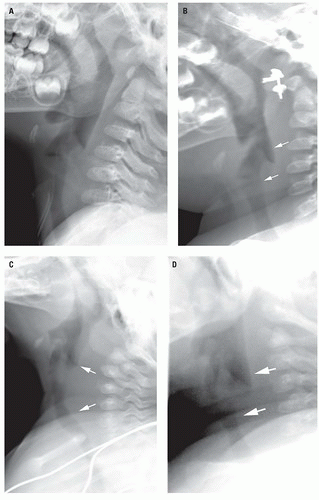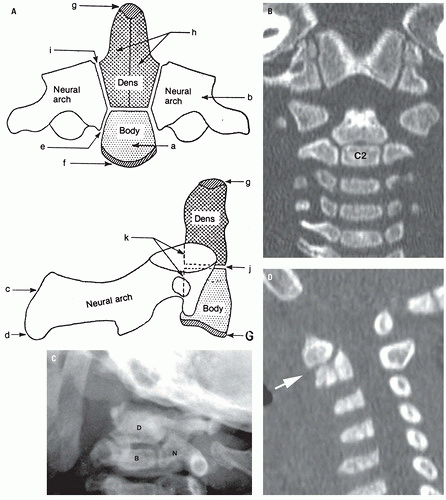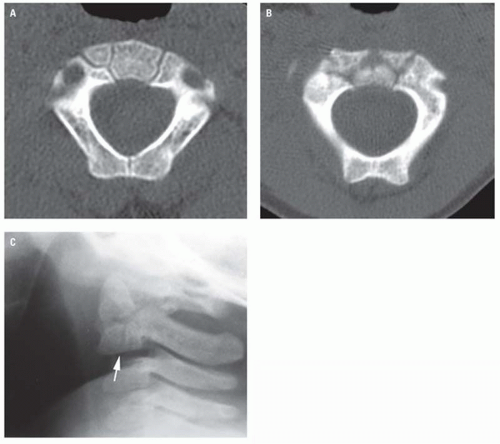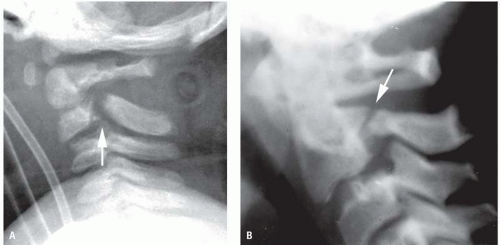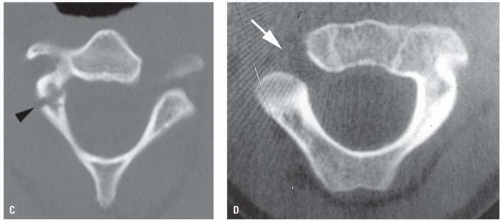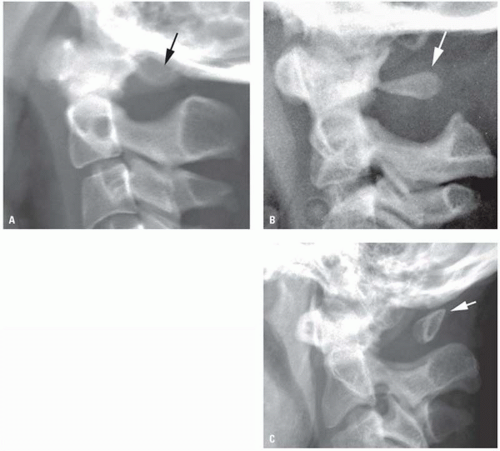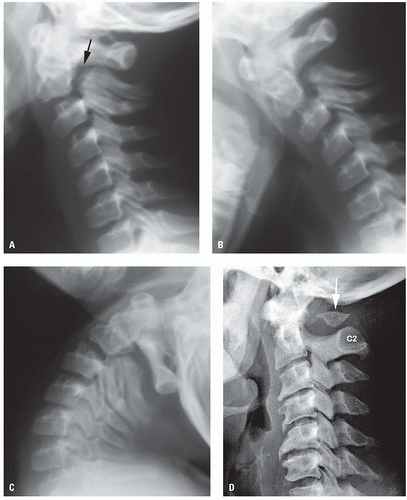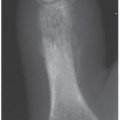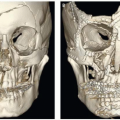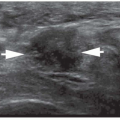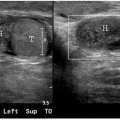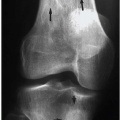The Pediatric Cervical Spine
Leonard E. Swischuk
John H. Harris Jr.
This chapter deals with trauma of the cervical spine in infants and children and how things differ from adults. It will not deal with all cervical spine fractures for many of them are no different than seen in adults. In addition, in the growing child especially the infant and young child, because of natural ligament laxity, hypermobility of the cervical spine abounds. As a result, many findings in infants and young children that would be considered abnormal in adults are normal.1, 2 Furthermore, the skeleton still is growing in children, and to accommodate this in the extra-axial skeleton, epiphyseal plates are present. In the spine, synchondroses serve the same function. If one is not familiar with these synchondroses, one may erroneously misdiagnose them for fractures. The most problematic of these occur in the second cervical vertebra and will be addressed later. This chapter also deals with congenital anomalies, which can go on to present in adulthood but often first present in the pediatric age group.
PREVERTEBRAL SOFT TISSUE SWELLING
Prevertebral soft tissue swelling often is difficult to evaluate because of problems in obtaining good images. To properly evaluate the soft tissues of the neck, the airway needs to be fully distended on inspiration and the neck needs to be extended. However, this can be difficult to accomplish, especially with the patient on the emergency medical service (EMS) backboard, but on the lateral view of the well-positioned normal airway, the posterior pharyngeal wall is always more posterior than the posterior tracheal wall and this results in a step-off of the air column at this level (Fig. 6.1A). This latter finding is helpful because even if the airway is not fully distended, if a step-off is retained, the findings likely are normal (Fig. 6.1B). When the study is obtained in expiration, tracheal buckling with a pseudomass frequently results (Fig. 6.1C) and the study needs repeating with proper technique (Fig. 6.1D).
In the end however, with all of this considered, I have come to this conclusion about the prevertebral soft tissues. If they are not sending a definite message, then do not spend too much time on them. Go on to evaluate the radiographs for signs of vertebral column instability. These include (1) anterior displacement of vertebral bodies (rotation-flexion injuries), (2) posterior displacement of vertebral body (hyperextension injury), (3) narrow disk space (flexion, rotational injuries), (4) wide disk space (hyperextension injuries), (5) pedicles seen “en face” (rotary subluxation), and (6) increased predental distance (C1-C2 dislocation).
SYNCHONDROSES
Synchondroses occurring in the third through the seventh cervical vertebra are not usually a problem. The problem is with synchondroses in the first and second cervical vertebrae.1, 2 With the first cervical vertebra, the problem is not as difficult for the synchondroses often are very symmetric, and once one appreciates this, there is little chance of misdiagnosing them for a fracture (Fig. 6.2).
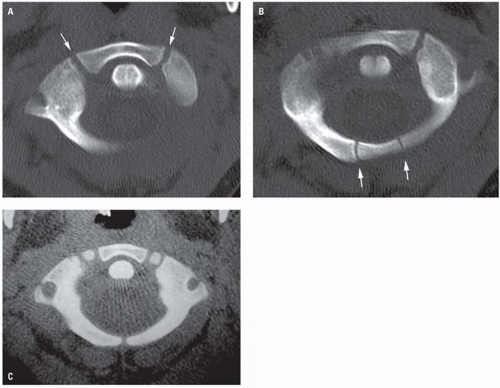 Figure 6.2. Synchondroses C1. A: Note symmetric anterior synchondroses (arrows). B: Similar posterior synchondroses (arrows). C: Numerous anterior and posterior synchondroses. |
The synchondroses of C2 are a different matter (Figs. 6.3A, 6.3B). Until one learns their configurations, it is very easy to misinterpret them for fractures. In previous days, on oblique views of the cervical spine, these synchondroses produced a Y-shaped radiolucent line configuration (Fig. 6.3C). With the advent of computed tomography (CT) imaging, the same configuration is seen on extreme lateral sagittal reconstructed views of the cervical spine (Fig. 6.3D). Aberrant synchondroses may appear very bizarre but they generally have smooth edges (Fig. 6.4).
NEURAL ARCH DEFECTS
Neural arch defects can be fractures or congenital defects. Fractures in the upper cervical spine usually result from hyperextension injuries such as the hangman’s fracture or axial loading injuries such as sustained in the Jefferson fracture of C1. The resultant defects usually are relatively thin and/or sharp-edged. They do not show sclerosis whereas congenital defects, although variable in their configuration, generally have smooth and sclerotic edges (Fig. 6.5).
Neural arch defects in the lower cervical spine are not particularly common.3, 4, 5 They are much more common at the C1 and C2 levels,1, 2, 6, 7, 8, 9, 10 but even here, they are much more common at the C1 level. At the C2 level, they need to be differentiated from hangman’s fractures, which do occur in infants and children.11, 12, 13, 14 In infants, these fractures maybe clinically silent and this is especially important because they can occur in the battered child syndrome.13, 14 C1 defects are very bizarre and extremely variable (Fig. 6.6). In spite of the bizarre and alarming appearance of all these defects, they are stable9, 15 and flexion/extension views can be confirmatory (Fig. 6.7).
Having considered all of the foregoing, there is one exception to the rule of stability with posterior neural arch defects of the upper cervical spine. This exception occurs when the dens is congenitally hypoplastic.4 In such cases, the transverse ligaments that stabilizes the dens and the lateral masses of C1 are underdeveloped and weak. All of this leads to excessive motion at the C1-C2 level and an increase in the predental distance—all discussed in the next section. In such cases, even though one might first note that the posterior arch of C1 is hypoplastic or deformed when the hypoplastic dens is also noted, the whole problem takes on a completely different and more serious complexion (Fig. 6.8). It usually requires surgical stabilization.
Stay updated, free articles. Join our Telegram channel

Full access? Get Clinical Tree


